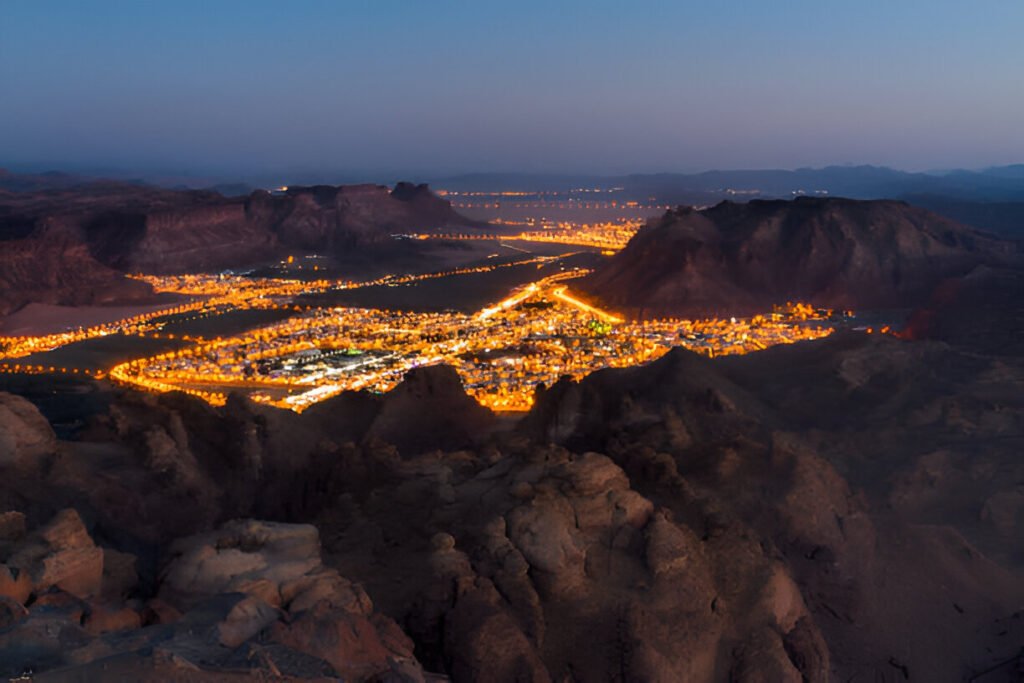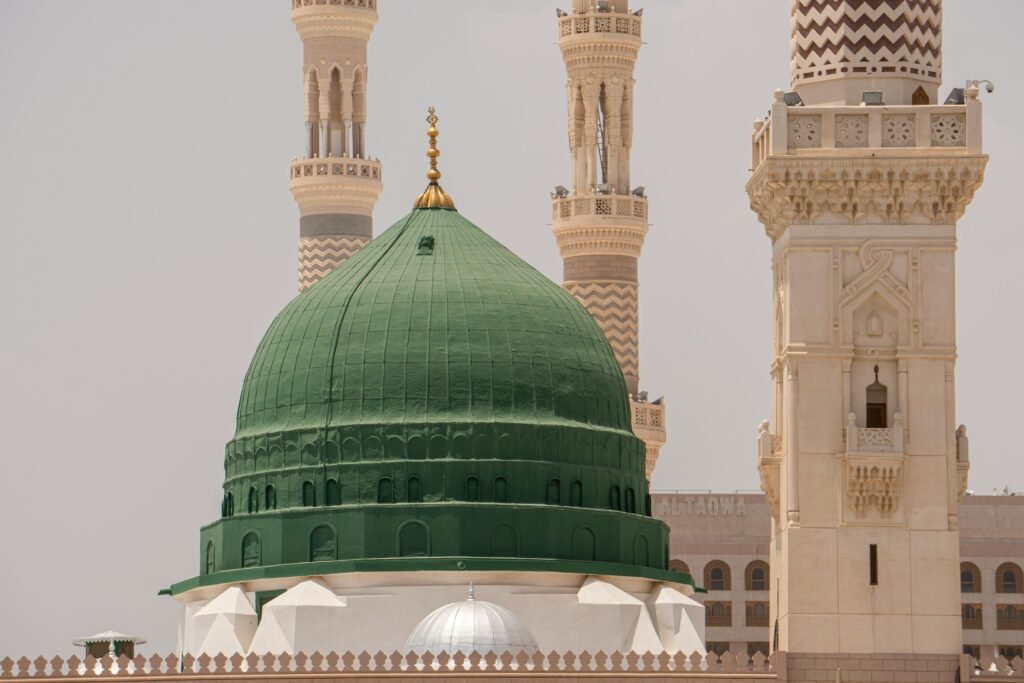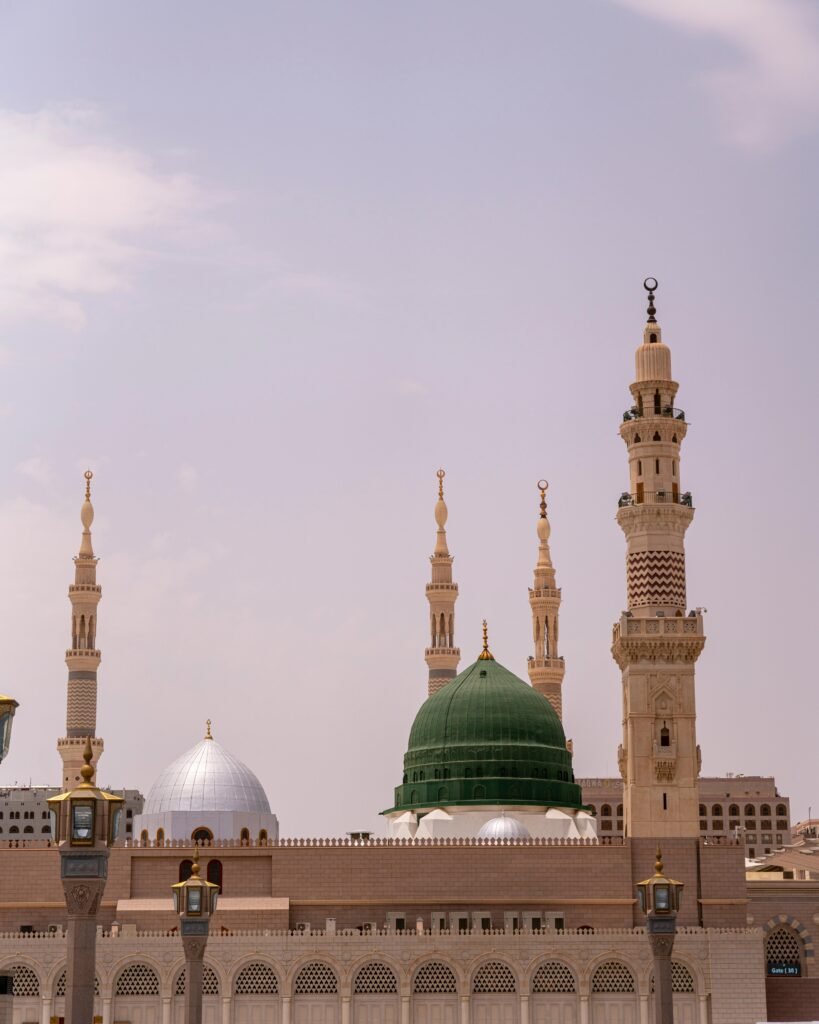Hijrah means leaving one’s homeland. The Prophet (PBUH) migrated from his birthplace, Makkah, to Madinah. Propagating the religion through persecution, suffering, humiliation, and emigration is the Sunnah of the Prophets. Wherever there is a lack of this Sunnah, the propagation of the religion is weak. If one compromises with falsehood, such persecution and Sunnah are not necessary. And if one plays an uncompromising role like the Prophet (PBUH), then one must face such severe Sunnah or circumstances.
The Reason for the Migration to Madinah
Due to the propagation of the religion, the polytheists of Makkah applied all possible forms of persecution against him. Finally, they decided to kill him. A meeting of the leaders of Makkah was held at Darun-Nadwa, the Makkah council located in the Haram Mosque. After a lengthy discussion on various proposals, it was decided, according to the suggestion of Abu Jahl, that one youth from each tribe would secretly approach and kill Muhammad (PBUH) at night.
After this proposal was accepted, Jibra’il (AS) brought a revelation and told Muhammad (PBUH) that Allah had commanded him to emigrate and that he had to do so that very night.
The Companion of the Migration
He went to Hazrat Abu Bakr’s house and made plans with him for the migration. Meanwhile, the enemies spent the entire day preparing to implement the secret mission to assassinate him at night. Eleven people stood in front of the Prophet’s (PBUH) house as the darkness of the night descended and decided to carry out the assassination after midnight.
The Prophet’s (PBUH) stay at the Cave of Thawr
Allah caused the enemies to fall into great deception, and they failed in their mission. The Prophet (PBUH) told Hazrat Ali to sleep on his bed, wearing his Yemeni cloak. The enemies would not be able to harm him. He entrusted to Ali the valuables that the Quraysh had left with him and, by the power of Allah, threw a handful of dust towards the enemies, passing through them without being seen. He then went to Hazrat Abu Bakr’s house, and together they took refuge in a mountain cave on the path leading away from Madinah towards Yemen, as the enemies would search for him on the road to Madinah. The people of Madinah had already invited him to come to Madinah after pledging their allegiance at the Second Aqabah. The Prophet (PBUH) set out for Madinah, and to deceive the enemies, he left his home and arrived at the cave. The date was the 27th of Safar, 14th year of Prophethood, corresponding to 12/13th of September, 622 CE. They stayed in the cave for three nights: Friday, Saturday, and Sunday. Abdullah bin Abu Bakr also spent the nights with them. Early in the morning, he would return to the Quraysh to ensure they didn’t realize he had been with them in the cave. He gathered all the news about the Quraysh and went back to the cave at night to inform them. Hazrat Abu Bakr’s servant, Amir bin Fuhaira, would graze sheep near the mountain and give them milk. Unable to find them, the Quraysh called for an urgent meeting and announced a reward of 100 camels for anyone who could capture them. Motivated by this huge prize, horsemen, foot soldiers, and expert trackers began searching all the fields, valleys, and mountains. Eventually, they reached the Cave of Saur. But Allah protected them. Abu Bakr (RA) grew anxious and said, “They almost saw us.” The Prophet (PBUH) reassured him, “Do not worry, Allah is with us.”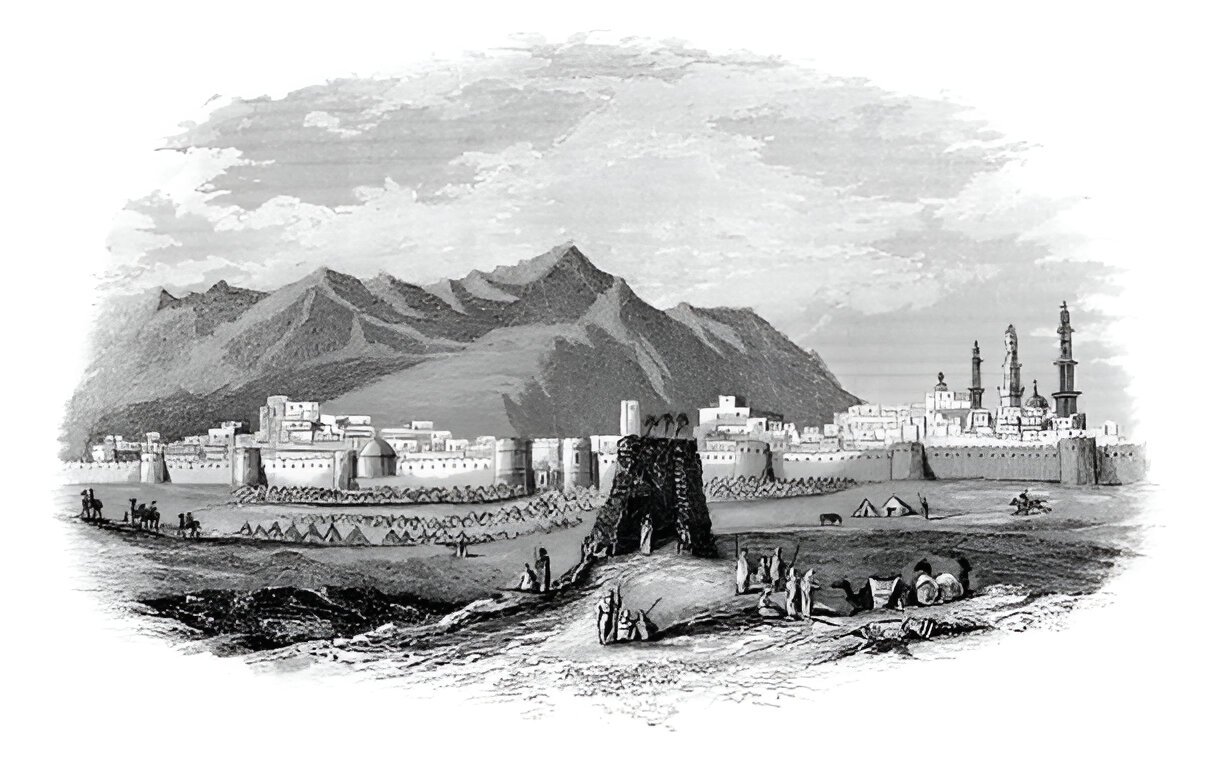
The Hijra of Rasulullah (SAW) to Madinah
For three days, the Quraysh searched relentlessly, but they failed to find him. After the intensity of the search diminished, Rasulullah (SAW) and Abu Bakr set out towards Madinah. They hired Abdullah bin Uraiqat al-Lisi, a polytheist, as a guide for a fee. They entrusted him with their two mounts and made an agreement to meet at the cave of Thaur after three days. Asma bint Abu Bakr prepared the travel provisions, but she forgot to tie them to the mount. She later divided her own waist strap into two parts: one part to tie the food provisions, and the other part she tied around her own waist. The waist strap is called Nitaq in Arabic. Subsequently, she was known as Dhat al-Nitaqayn (the one with two waist straps). They moved towards Madinah via the Red Sea coastline, first heading south from the Thaur mountain and then towards the west to the coastal shores. After arriving at an unfamiliar path, they turned north, passing west of Usfan and eventually reaching Quba.
In a hadith narrated by Abu Bakr (RA) in Sahih Bukhari, he summarizes, “The day after we began the journey, we rested at a large shaded rock. Rasulullah (SAW) asked for permission to sleep, and I kept watch. I then saw a herder with a goat approaching the rock. I asked him for some milk, and he gave us some. Since Rasulullah (SAW) was asleep, I didn’t want to wake him. Later, when he awoke, I gave him the milk to drink. It is truly the infinite power of Allah. In the harsh desert and unfamiliar paths, Allah sent a herder to provide food for His beloved Prophet.”
Surakah bin Malik was sitting in a gathering of his Mudar tribe when someone came and told him that they had spotted Muhammad and his companions by the sea. Surakah, eager to claim the reward, said, “You have not seen Muhammad, but rather someone else who passed by us.” However, the man had understood they were Muhammad (SAW) and his companions. Surakah delayed his departure, telling his servant to bring his horse from behind the house. He set off on his horse with his bow, aiming to catch up. When he reached Rasulullah (SAW), his horse stumbled and fell. He got off and drew his bow to cast lots, but the unlucky lot came up. After discarding the lot, he remounted his horse and continued to pursue the Prophet. However, his horse got stuck in the sand, and as Surakah tried to free it, the horse kicked up a huge cloud of dust. He again drew his bow for another lot, and once again, the unlucky lot came up. At this point, Surakah sought protection from Rasulullah (SAW), who stopped and granted him safety. Surakah then explained the entire situation.
Surakah offered to provide whatever he had on him for their service, but Rasulullah (SAW) refused, instructing him to keep their presence a secret. Surakah then requested a written guarantee of safety, which Rasulullah (SAW) granted.
During the journey, Rasulullah (SAW) passed by the tent of Umm Ma’bad from the Khuzā‘a tribe. She lived in the tent and used to provide food and drink to passing travelers. They asked her, “O Umm Ma’bad, do you have any food?” She replied, “By Allah, if I had anything, I would have certainly given it to you.” Rasulullah (SAW) noticed a weak goat tied up nearby. He asked, “Does this goat not have any milk?” She said, “It is so weak that it cannot go out with the other goats.” Rasulullah (SAW) asked her permission to milk it, and she granted it. He milked the goat by saying Bismillah (in the name of Allah) and filled a container with milk. After drinking, he gave some to her as well. Everyone drank their fill, and after that, he milked the goat again and left the container full as they departed.
When her husband, Abu Ma’bad, returned home and saw the milk, he was astonished and said, “By Allah, someone righteous must have passed by us.” He asked her for details, and when he heard the description, he said, “I understand. This is the Quraysh man whom we have heard so much about, and the Quraysh are searching for him. If I get a chance, I will certainly go to him.”
Meanwhile, an invisible poet in Makkah started reciting verses describing the events at Umm Ma’bad’s tent, which reached Asma bint Abu Bakr. She realized that Rasulullah (SAW) was heading towards Madinah. The poet’s verses mentioned that the events at Umm Ma’bad’s tent should be verified for truth.
On his journey, Rasulullah (SAW) encountered Abu Buraydah, the leader of his tribe, who had set out with a group of people in search of the Prophet to claim the reward announced by the Quraysh. However, as soon as he saw Rasulullah’s (SAW) blessed face, he and seventy of his followers embraced Islam. Abu Buraydah removed his turban, tied it to an arrow’s head, and declared, “The King who will fill the world with justice and fairness has come.”
On the way, Rasulullah (SAW) met a trade caravan returning from Syria, led by Zubayr, who offered Rasulullah (SAW) and Abu Bakr white garments.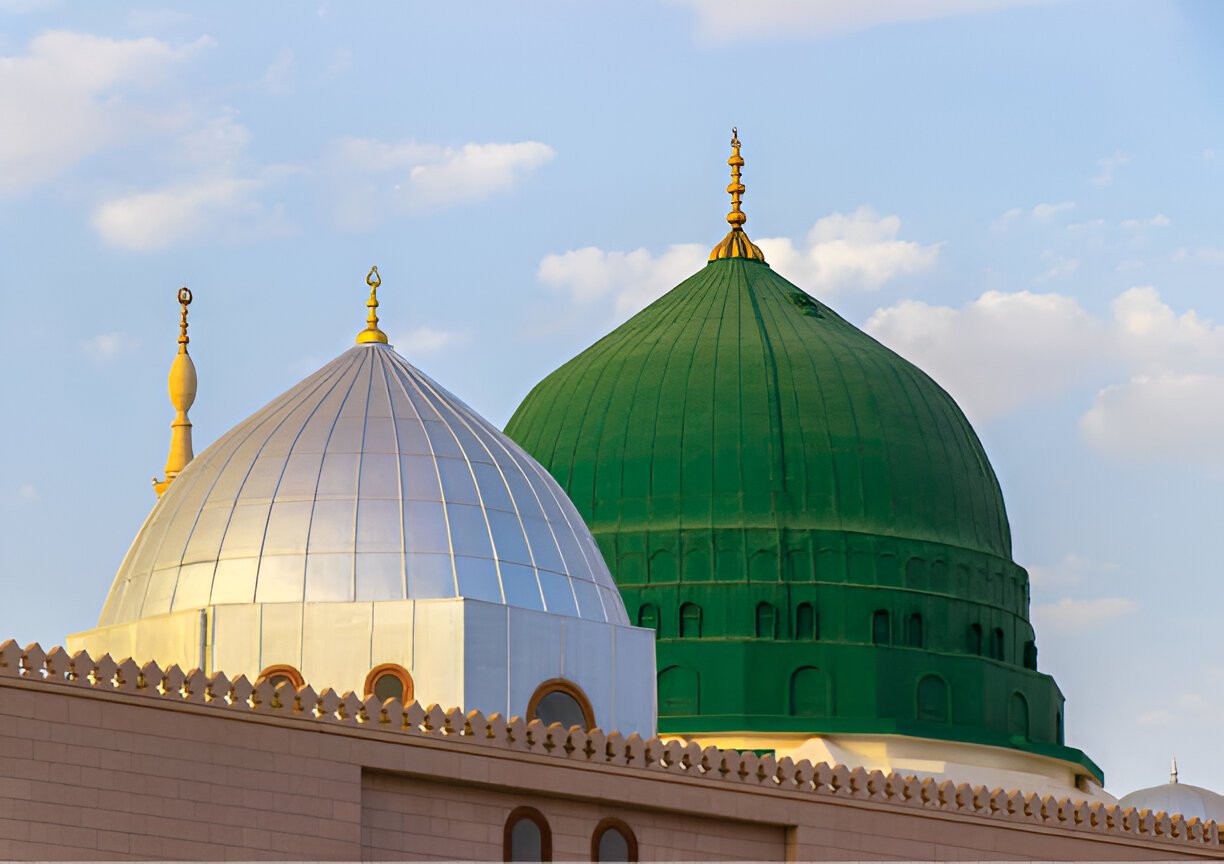
Upon reaching Madinah
Rasulullah (SAW) entered Quba on the 8th of Rabi al-Awwal, 14 years after the beginning of his prophethood, on a Monday. This corresponded to September 23, 622 CE. The Muslims had received news that Rasulullah (SAW) was on his way to Madinah, and they eagerly gathered every morning in Harrah, waiting until noon before returning home. Their wait grew longer. As they returned home, they had an observant Jew stationed on a high tower to keep watch for the Prophet’s arrival. When the Jew saw him, he cried out, “The one you have been waiting for has arrived!” The Banu Amr bin Awf tribe began chanting the takbir and rejoicing. They rushed out to greet him. Rasulullah (SAW) remained seated while Abu Bakr (RA) stood and exchanged greetings with the well-wishers. Those who had never seen Rasulullah (SAW) mistook Abu Bakr for the Prophet and greeted him. When the sun began to shine on Rasulullah (SAW), Abu Bakr (RA) shielded him with his cloak. It was at this moment that people recognized him.
The entire city of Madinah erupted with joy and celebration. They had never witnessed such happiness before. Rasulullah (SAW) stayed in the house of Kulsum bin Hadam from the Banu Amr bin Awf tribe in Quba. After three days, Hazrat Ali (RA) arrived in Quba from Makkah, having returned the trust that people had left with him. He joined Rasulullah (SAW). A few days later, Ummul Mu’minin, Hazrat Sawda, and her two daughters, Fatimah and Umm Kulthum, joined him. They were accompanied by Usama bin Zayd, Umm Aiman, and Abdullah bin Abu Bakr, led by Abu Bakr’s family and Hazrat Ayesha (RA). Rasulullah’s (SAW) daughter Zaynab remained in Makkah with her husband, Abu al-As, and was unable to join him before the Battle of Badr.
After arriving in Madinah, Hazrat Abu Bakr and Bilal fell ill. Hazrat Ayesha (RA) arrived from Makkah and found them ill. She informed Rasulullah (SAW), who prayed for their recovery. They soon recovered their health.
While staying in Quba, Rasulullah (SAW) built the Masjid al-Quba.It was after the Hijra and arrival in Quba that the golden era of Madinah began. Before this, it was known as Yathrib. But after Rasulullah’s (SAW) entry, the city came to be known as Madinah.

